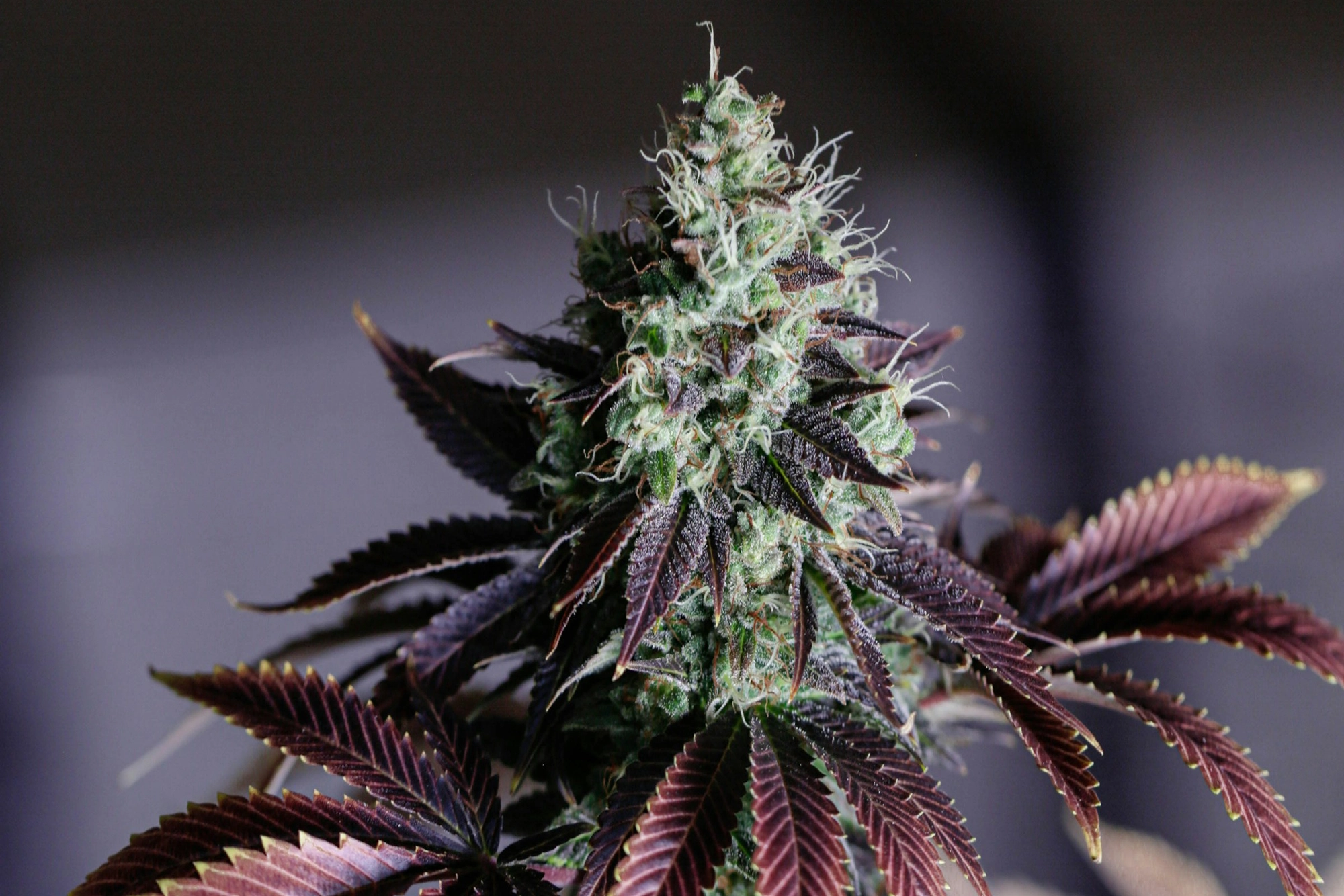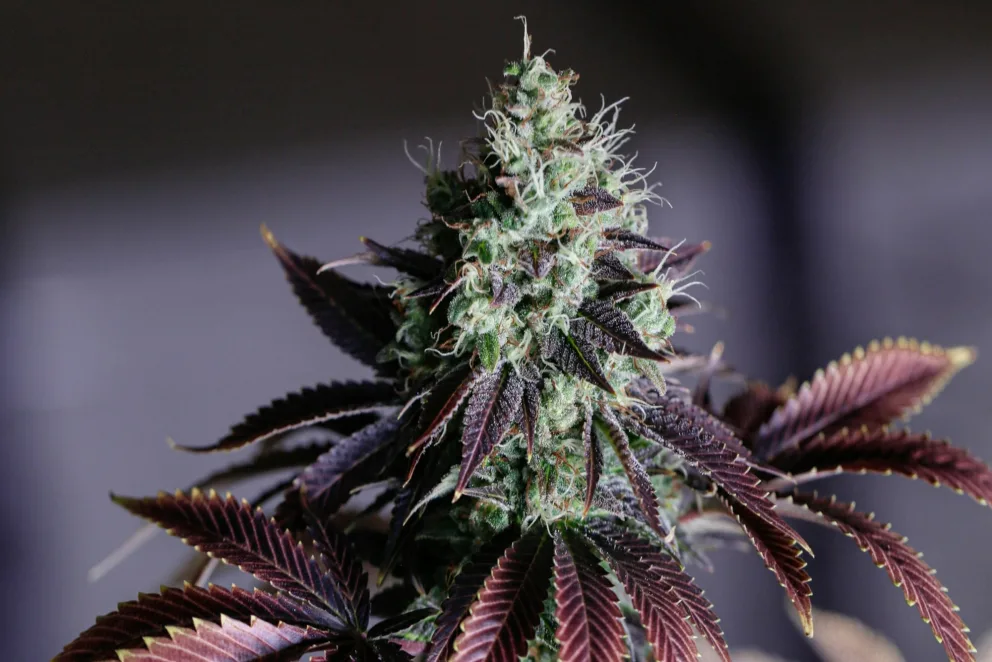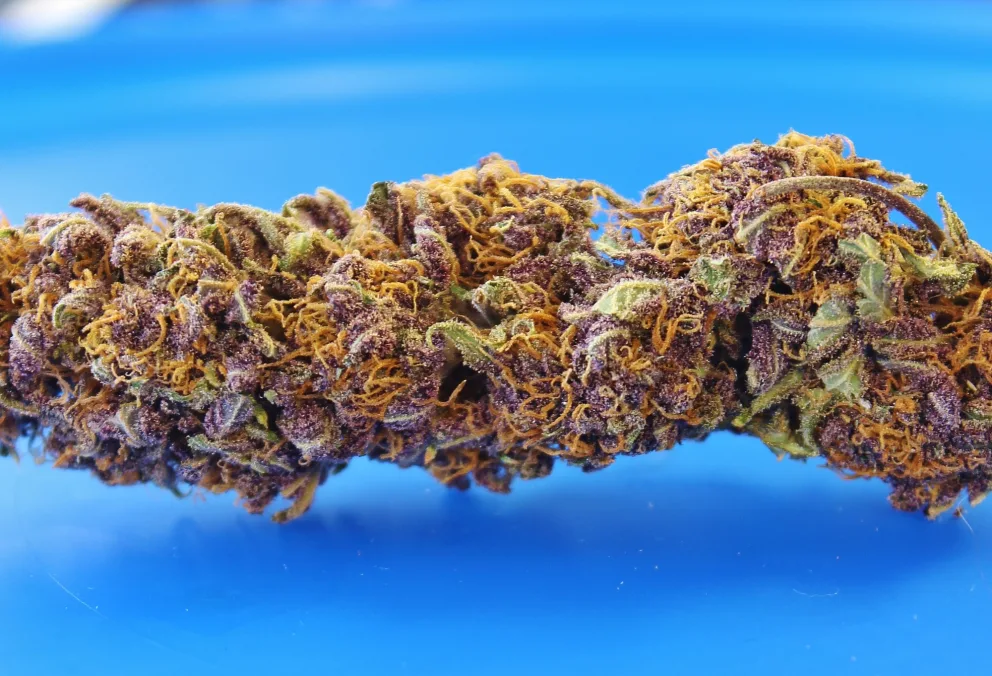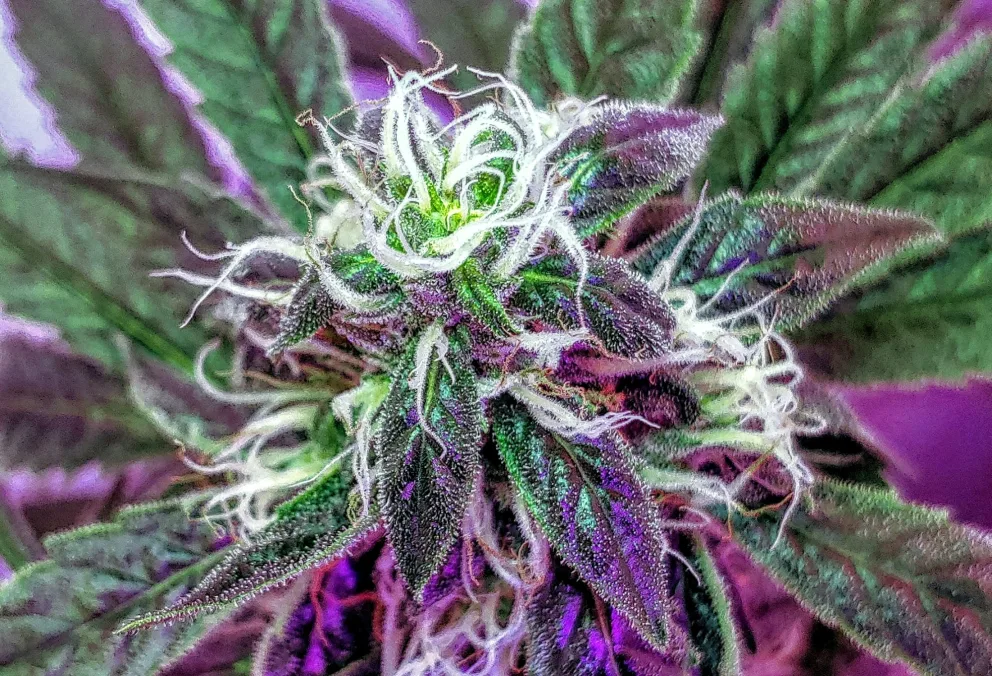
What is Purple Weed, What Makes Weed Purple & Is Purple Weed Better than Normal Weed?

Photo by Diyahna Lewis on Unsplash
Thanks to legalization, the cannabis industry is booming for medical patients and recreational enthusiasts. This exploding market has driven demand for a string of cannabis innovations and a growing demand for new and interesting forms of cannabis. Did you know there’s even purple weed? The growing industry has left budtenders with an almost encyclopedic knowledge of diverse and even obscure cannabis strains and cultivators selectively breeding for higher THC content, selective terpenes, and even the unique purple color. Some strains can take on a subtle violet color thanks to their breakdown of phytochemicals, a.k.a. plant chemicals.
The budding cannabis industry has driven an interest in unique ways to consume cannabis ranging from high-THC moon rocks to dabs to edibles of all kinds. The expanding interest in specific strains has caused a growth in cultivation of new and unique strains to match the increasing demand. Where does purple weed fit into all of this?
Cannabis strains are all unique and can each have a different chemical breakdown. As plants, it’s not completely unheard of for them to grow in different colors ranging from pink to almost black but more commonly purple. But what exactly is purple weed? What makes it purple? Is it better? Is purple weed stronger?
This post will explore all of the details about this unique variety of cannabis and all of the secrets of purple weed.
What Is Purple Weed?
The name may say it all but many may not know that there are strains of cannabis that can naturally take on a purple tone. Certain strains like Grandaddy Purple can have a natural purple tint either to their stems, flowers, or leaves.
You may think they’ve been doctored but there’s actually naturally-existing cannabis strains that can contain high amounts of chemicals that make them purple. Part of what drives the usership of cannabis besides the high are the many phytochemicals that can serve as anything from a natural sleep aid to a pain reliever and in many cases an antioxidant.
So what makes purple weed so great? Let’s start by exploring what makes these strains purple in the first place.

What Makes Weed Purple?
It’s shocking enough to believe that there is purple weed that occurs naturally out there. Longtime cannabis enthusiasts may be familiar. However, even then you may still wonder what makes purple weed purple?
Purple cannabis strains owe their distinctive color to a group of phytochemicals called anthocyanins. Anthocyanins are a group of water-soluble pigments biologically part of a chemical family called flavonoids. Flavonoids are found throughout the plant kingdom and have their own health benefits.
Anthocyanin can create purple, blue, and red to occur in plant tissues. They are found in common foods like red and purple berries, grapes, apples, plums, cabbage, and other highly pigmented foods.
As cannabis plant’s cells begin creating concentrations of anthocyanins, this can result in a range of purple shades in the leaves or buds or even as purple looking crystals in the trichomes. The development of anthocyanins can be caused by genetics, as only some strains can generate anthocyanins. However, there are also environmental factors that can increase a plant’s anthocyanin content.
Why Is Some Weed Purple?
Why do some cannabis plants create anthocyanins in the first place? It’s important to remember that while cannabis is full of compounds that can engage with our endocannabinoid system and other parts of the human body they are often created to keep plants alive.
There are a few factors that can result in the development of these purple-inducing anthocyanins, the first being genetics. This post will include a list of the most commonly known purple strains. However, environmental conditions can influence the anthocyanin concentration in these plants. This explains why some purple cannabis can have a deeper hue than others.
Research suggests that climate change may be driving increased anthocyanin levels as plants can use these compounds for thermoregulation, to moderate their temperature or photoprotection to reduce excessive inbound radiation. In a 2021 study, researchers examined how plants displayed flower colorations as a response to biological stressors like extreme temperatures or drought.
Another study found exposing cannabis flowers to different light across the spectrum, specifically short-wavelength blue and UV light, can increase anthocyanin content. Again, so many phytochemicals serve as defense mechanisms for plants and these benefits can translate to the human body.
Cannabis strains must naturally possess the genes that promote anthocyanin synthesis, in order to create purple pigment. Additionally, given the novelty more cultivators may try to interbreed and create more purple strains.
Apply for a Medical Marijuana Card Online Today
Join over 100,000 patients who have chosen Green Health Docs as their medical cannabis doctors. We have a 99% approval rate and offer a 100% money back guarantee!
Is Purple Weed Better?
Before you take the plunge and try purple weed, you may be asking yourself, Is purple weed good? Is it better? Is it stronger?
What sets purple strains apart from other strains is simply the pigmentation. However, anthocyanins do possess antidiabetic, anticancer, anti-inflammatory, antimicrobial, and anti-obesity qualities. This can help boost the added effect of other compounds like cannabinoids and terpenes.
Anthocyanin can also serve as a potent antioxidant which can help reduce oxidative stress. This is what causes natural cell aging but it can also participate in the development of cardiovascular diseases (CVDs) or neurodegenerative diseases. Antioxidants can also help in cancer prevention and help reduce the spreading of cancer.
Is Purple Weed Stronger?
Many people may report that purple weed is stronger but this may be more caused by the placebo effect or the novelty of difference because they actually are likely to have less THC concentrations.
Recent study has found cannabis plants with higher concentrations of anthocyanins actually tend to produce lower levels of THC. This is because the biochemical pathways for anthocyanin production and cannabinoid production compete for the same precursor molecules within the plant’s metabolism. That means if you have more of one you may be less likely to have more of the other.
However, this does not mean that it may not have stronger effects. The entourage effect is the sum of how all of the chemicals in cannabis work together. Anthocyanin and THC and the other chemicals in that strain may cause a feeling of a stronger high.
Does Purple Weed Do Anything Special?
Some cannabis studies have found that purple strains have helped with the effects of perceived depression and anxiety symptoms.
Another study with 163 individuals, some who used dark purple strains, used it for treating chronic pain found they are less likely to show problematic cannabis use patterns compared to others who used it for other conditions.
Science is still studying the various benefits of the hundreds of chemicals in cannabis. Increased interest, legalization, and funding is leading to more interesting finds and growing exploration of the full scope of benefits.
So which strains are purple?

What Strains Of Weed Are Purple?
Again, a cannabis strain must contain the proper genetic makeup to even synthesize anthocyanin. The list of purple strains is growing and here’s a list of all of the strains known to appear in any hue of purple.
Purple strains of cannabis include:
- Grape Ape
- Blackwater
- Purple Urkle
- Blue Knight
- Purple Berry
- Purple Afghani
- Purple Lemon Haze
- Purple Haze
- Purple Haze x Malawi
- Purple Tangi
- Lockdown Kush
- Lemon Cake OG
- Purple Diesel
- Grandaddy Purple
- Grape Skunk
- Purple Kush
- Obama Kush
- Purple Skunk
Thanks to selective breeding more strains can potentially be bred to be purple. If you’re curious about a deep dive into these strains this post highlights all of the various details and flavors to these strains in depth.
Final Thoughts
One benefit to growing legalization and the administering of medical marijuana is we are doing more research into the benefits of the countless compounds in cannabis. These survival defense mechanism chemicals all help plants thrive and some of those attributes are transferable to the people that consume them.
Purple weed is more than a strange mutation or curiosity. It’s been found to have its own blend of organic compounds that can also help boost your health and the effect of other phytochemicals. If you’d like to try purple weed as a form of treatment, start by getting your medical marijuana card today.
The process is seamless, thanks to Green Health Docs, and can give you access to the best medical-grade cannabis in your area and you can be part of a whole new approach to medicine.
 This article has been reviewed by Dr. Anand Dugar, an anesthesiologist, pain medicine physician and the founder of Green Health Docs. Graduating from medical school in 2004 and residency in 2008, Dr. Dugar has been a licensed physician for almost 20 years and has been leading the push for medical cannabis nationwide.
This article has been reviewed by Dr. Anand Dugar, an anesthesiologist, pain medicine physician and the founder of Green Health Docs. Graduating from medical school in 2004 and residency in 2008, Dr. Dugar has been a licensed physician for almost 20 years and has been leading the push for medical cannabis nationwide.
